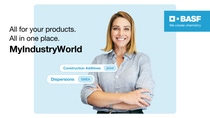MyIndustryWorld
Cellulose Fibers
In nature, cellulose fibers form the supporting structure of plant cells. Their excellent mechanical properties are particularly useful in finish-foils, filtration or wall-covering applications. Combined with our binder systems, they help improve important characteristics – such as bonding strength and dimensional stability.

Automotive filtration
Filters help protect the engine from various types of dirt particles. Our systems extend the operating life of filters by simultaneously improving durability and the efficiency of dirt filtration.

Finish foils
Our binders optimize productivity because they allow excellent processability and homogeneous penetration into the paper. Their strong internal bonding and their good print and lacquer characteristics are also impressive.

Wall coverings
Nonwoven wall coverings are easy to apply and can be removed without a trace.
Our binders provide dimensional stability, water resistance and internal bonding to your nonwoven wall coverings.
Application's products
Discover

Technical Information: Preservation of Polymer Dispersions

Access your PCF data online

How to read your PCF statement

Discover „MyIndustryWorld“ - the new service portal of BASF

BASF at Techtextil 2024: Shaping the future of the textile industry with sustainable solutions
Choose your application:
Contact us
Not found what you were looking for? Reach out to us for assistance.
Subscribe to our News-Service
Don’t miss the latest news on web seminars, sustainability, regulatory and product innovations.







